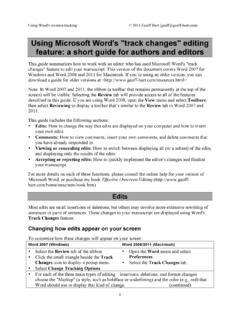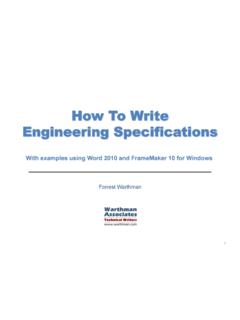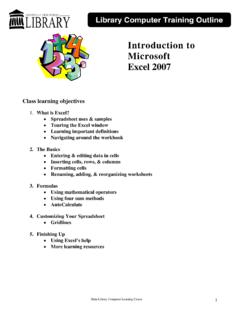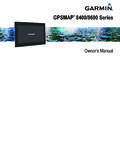Transcription of Cassette2CD Wizard™ 2.02 User's Manual
1 Cassette2CD Wizard User's Manual Table of Contents 1. Installation Instructions a. Connecting tape-deck to the computer b. Installing the Software 2. Using Cassette2CD Wizard a. Setting up and Testing for Audio 3. Recording and Saving Audio Files a. Automatically Detecting Tracks b. Editing and Cleaning the Recording c. Noise Removal 4. Naming your Songs 5. Saving the Audio Files a. Exporting as WAV or MP3 b. Burning a CD 6. Minimum System Requirements: PC w/ Windows XP, Vista, or Windows 7/8 CD burner Blank CD's (CD-Rs recommended) Tape player 1-2 GB free disk space Cassette2 USB Converter OR "Line In" jack on your audio card (microphone jack on a laptop) 2 Connecting the Audio Source to the Computer: Connect the Cassette2 USB Converter to your computer using the included USB cable. You can also use a audio cable.
2 To do this, first connect the headphone jack of the tape-deck (or other input device). Then connect to the line in (blue) jack (red microphone jack on a laptop) of the computer: Installing the Software: Insert the CD into the computer and run the installation program when prompted. When complete, a new icon will appear on your desktop: Using Cassette2CD Wizard: Double click on the desktop icon to launch the program. The initial screen will appear and remind you to complete the steps above before the recording process can begin. After verifying that you have everything connected, click Next. Or use the Jump buttons to perform another task. 3 Testing for Audio: Select the Recording Device, in this case the USB Audio option. Then, press Play on the cassette player to verify you have movement on the Audio Level indicator.
3 If you wish to listen to what you are playing, check the Preview Audio box. Adjust the volume setting (about way) until you can judge the volume of playback to make sure the level is high enough. Click Next to continue. Recording and Saving Audio Files: Queue the tape in the cassette player to the beginning position. Check the box and set the Stop Recording After time if desired. Press Play on the Cassette Player and the Record button to begin. Press the Pause button if you need to add on to the current recording ( flipping the tape to Side 2) or press the Stop button when finished. Click Next to continue. Remember: Each wizard screen has instructions on the functions available for that screen . 4 Automatically Detecting Tracks: Tracks are identified by the spaces or gaps of silence between songs. When Automatically Detect Tracks is selected, the Wizard will create tracks based on the gaps between songs.
4 (Tracks may remain un-selected if a clean break cannot be found.) Editing and Cleaning the Recording (Manually): If you have chosen to create your own tracks or you need to add additional tracks, use the steps below to define where the recording will be separated. If you are recording a piece that is Spoken Word or a Book on Tape you will want to use the method below to create a single track. 5 Click the New Track button to define a new track. The entire recording will be selected. Hover your mouse over the left most side of the screen until you get the double headed arrow. Then click and drag on the ending line (left most border) to define the new stopping point for the song. Note: If you have trouble picking up either the starting line or ending line, hover your mouse over the border until it gives you the double headed arrow, then click and drag.
5 Resize the track until you have encompassed the entire song. Then click the New Track button again to highlight the recording and resize the selection for the next song. The Red Line is a ruler to let you know where in your recording you are located. 6 Noise Removal: Some tapes develop noise over time as they are played often or there may be repetitive noises from the original recording. The Noise Removal filter can help remove these before saving or burning. Click the Noise Removal button to start the process: You can choose to allow the Wizard to remove the noises from the recording automatically or manually. If you choose the advanced option, you will click the Select Pause button, then click and drag a selection of the wave form that is from either a gap between songs or the beginning or end of the recording. Once you have the option of your choice selected, click the Remove Noise button.
6 This meter bar will appear until the process is complete. Note: Noise Removal is for the removal of repetitive noises, not to change the quality of the recording. If the removal affected the recording in a bad way, click the Reset Changes button to undo the changes. 7 Naming Your Songs: On Step #4, you can add song names, artist names, titles, and other information about the tracks you have just made. Enter the information for the track and then use the track navigation buttons to go to the next track to enter its information. After you have all the track information entered, click the Next button. Note: The Cassette2CD Wizard is designed primarily for commercial cassettes. The Artist Name and Album Title fields will automatically copy to each track for consistency. For mix-tapes or various artist type tapes, we recommend leaving the Artist and Album fields blank and then updating this information in your favorite audio editor or Windows Explorer.
7 8 Saving the Audio Files: You can choose to save your Audio Files as MP3s, WAVs, or burn them directly to an Audio CD. If you choose to save them as either an MP3 or a WAV file, you will be prompted to choose a destination folder. The Music Library (or My Music) folder would be the preferred location, but the Desktop will make your files the easiest to locate. They can always be relocated later. If you choose to burn your files to a CD, this screen will appear: Insert a blank CD-R into your drive and click Burn. You may do this for as many CDs as you would like to make. Click Next when finished. Note: use the buttons in the right hand column to add/remove tracks or edit the track order listed. 9 Frequently Asked Questions/Troubleshooting: Q. I'm using the "Line In" or "Microphone" jack on my sound card to record audio, and my audio recordings have low quality / don t sound good.
8 How can I achieve better sound? a. Either the sound card on the computer or the headphone jack of the tape player being used cannot provide enough gain (volume) for audio recording. An amplified audio source is necessary. We recommend our Audio2 USB Cable can solve this problem. For more information on the Audio2 USB Cable, please visit Q. I don't have a cassette tape player to use to transfer. Where can I get one? a. We recommend getting the Cassette2 USB Converter, if you have not already at: You can purchase an analog cassette tape player for $10-$20 on eBay or from your local Wal-Mart. Q. I don t get any sound in my audio recordings or I get blank files. What do I do now? 1. Make sure your connections are correct. If using the Cassette2 USB Converter, this should be plugged into any USB port. If using a cable, it should be plugged into the headphone jack on the cassette player and into your computer's "Line In" audio jack.
9 2. Make sure you have the correct audio device on the first step. If using the Cassette2 USB Converter, it should be "USB Audio Device" or "USB Microphone Array." 3. Make sure your volume is turned up on your cassette player as well as in the program. 4. Also, try plugging in the audio cable before starting up the software. 10 Q. The CD is reported as not empty even though it is brand new? a. This can happen when another CD burning program is on the computer and has control of the CD Drive. To correct this, insert the blank disc BEFORE you launch the Wizard to start your recording session and close any Auto-Run window that may open up. If you currently have a recording created, use the Back button to save your audio as MP3 or WAV then start the Wizard program over and click Burn CD on the Welcome screen. Q. I don't get the USB Audio device as an option on Step #1 a.
10 Most likely the Wizard program was already open when you plugged in the audio device. Please close the program, unplug and re-plug in the device, then open this program. If this does not resolve the issue, please open a support ticket or send us an e-mail at the addresses on the next page. Q. I have created tracks for my spoken word recording, but there are noticeable gaps in the recording, why? a. Our program places the industry standard 2 second gap between tracks as it burns them onto a CD so that the CD will skip tracks like a commercial CD. For spoken word it is best to create a single track that encompasses the entire recording. Q. I have tapes that are 90-minutes long, how do I get these to fit onto one CD? a. A CD has a physical capacity of 80-minutes. For tapes longer than this it is best to break your recordings up across multiple discs.






